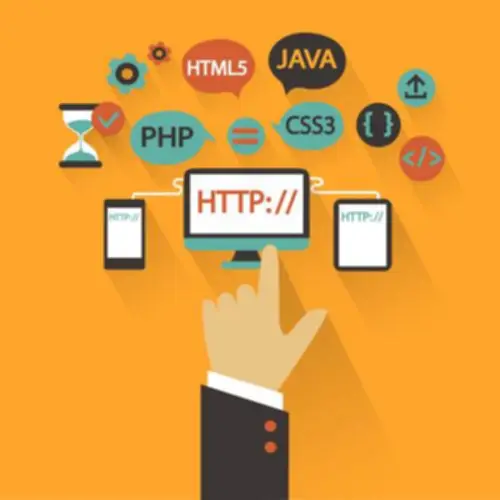As stablecoins gain traction, their integration into mainstream financial methods is already underway, making regulatory clarity and infrastructure improvement key areas to look at. There have been persistent stories of reforms and slashes at major regulatory agencies like the Fed, CFPB, and the SEC. Regulatory uncertainty can create confusion for banks and fintechs, which makes it a trend worth paying attention to. To bridge this hole, lenders are increasingly incorporating various credit fashions that use cash move knowledge, pay stubs, and utility payments to color a extra complete picture of a borrower’s finances.
- Today’s industry norm is through a card swipe (with a virtual / bodily card) in a store or online (through a website / app).
- As technology and digital experiences proceed bettering, so must the velocity of money motion.
- China’s Digital Yuan and the Digital Euro projects are anticipated to be fully operational by 2025, enhancing international trade and remittances, significantly in rising markets with restricted entry to conventional banking.
- As competitors grows, fintechs are emphasizing personalization and micro-segmentation to higher serve completely different demographics—particularly digital-first consumers like Gen Z—who anticipate seamless, customized interactions.
How Banks Should Prepare For 2025’s Fintech Revolution

AI-driven private finance tools, built-in into fee apps, will present real-time, customised recommendation, enabling smarter financial choices and around-the-clock support for users. In 2025, synthetic intelligence (AI) shall be integral to remodeling fee systems, creating smarter, safer, and more intuitive transaction experiences. AI-powered fraud detection systems will allow real-time transaction monitoring, figuring out and mitigating suspicious exercise, notably in cross-border funds, the place fraud risks are greater. By analysing vast datasets in seconds, AI will ensure safe transactions, stopping financial losses and enhancing belief in world payment techniques.
These will help obtain larger cross-border payments through digital connectivity by aligning digital guidelines, requirements and knowledge change, all of which are important for good regulations, leading to risk-based rules. We can potentially see the launch of passporting rights for financial establishments, fintechs and cost payments technology trends providers, primarily based in one nation, offering payment services to the remainder of SEA. In the years to come back, there shall be a discount in the want for duplicative actions, such as Know Your Customer (KYC) checks, permitting these gamers to focus on experimenting with new ways to support the volume of cross-border transactions. With the suitable safeguards and risk administration frameworks in place, cross-border funds will really turn into interoperable. Digital wallets are already mainstream, but different payment strategies like BNLP are gaining momentum.
For digital payment companies to make a bigger impact, a sharper give consideration to accessibility, simplicity and affordability is key, while overcoming the belief barrier. Furthermore, trade gamers need to first understand the global megatrends re-shaping the future of payments, before starting to future-proof their businesses. The funds trade is evolving quicker than ever, with tendencies like real-time payments, subscription innovations, and AI-powered tools redefining how businesses and shoppers work together. In this interview, Anastasija Tenca, Chief Operations Officer at Noda, shares insights on what to expect in 2025, from Pay-by-Bank solutions to futuristic voice-activated funds. During an period by which customer experience is extremely valued, offering extremely personalized digital interactions might help payments-industry leaders to attract and retain prospects, particularly in a aggressive market like banking. Ince digital payments became the backbone of global commerce, fintech startups have been racing to realize a bit of this rising pie.

Tokenization in fintech is vital to Mastercard’s imaginative and prescient to remove manual card entry by 2030, and it’s driving the adoption of in-car commerce (pun intended), however its potential past card payments is immense. In Europe, for instance, Mastercard is launching a service that permits retailers to verify that a shopper meets the factors to buy sure goods or companies through their cost card — no uploading of paperwork essential. The small companies that survived — and certainly thrived — during the https://www.globalcloudteam.com/ pandemic were often the ones that shortly embraced digital payments, e-commerce and other digital touchpoints. Your success depends on navigating what’s taking place now and anticipating what’s coming. Client demand for tailor-made monetary experiences is driving a shift toward personalization and micro-segmentation.
The Rise Of Real-time Cost Methods

Monetary institutions will flip to automation, real-time monitoring and AI-powered compliance tools to reduce regulatory burdens and enhance fraud detection capabilities. New laws, together with enhanced oversight of middleware suppliers and third-party risk administration requirements, will form the evolution of the BaaS industry. In response, RegTech (Regulatory Technology) solutions will see accelerated adoption in 2025, serving to https://skyturbo.com.br/generative-ai-in-retail-use-circumstances-examples/ financial institutions streamline compliance processes.
Nevertheless, despite the thrill round AI-powered banking and investment products, consumer-facing AI functions remain largely experimental. Fraud remains one of the biggest challenges in financial companies, and fraud makes an attempt are becoming increasingly sophisticated. Fraud losses have continued to extend, with the FTC reporting losses of $12.5 billion in 2024, up 25% over 2023. Losses from AI-driven fraud and synthetic Warehouse Automation identities are already rising, with nearly half of US and UK companies falling sufferer to deepfake financial scams. Real-time funds (RTP) are becoming the usual, allowing for immediate money transfers across the clock.
This shift to digital alternate options is driven by client demand for seamless and secure fee choices. Now that you know which monetary companies know-how developments to follow in FinTech this 12 months, it’s time to choose a dependable provider of digital payments options. It’s short-sighted to underscore the significance of your software developer‘s FinTech experience or to search for the lowest price in the marketplace.
The BNPL area of interest offers immense development potential and is anticipated to continue the upward market trend. Many cutting-edge software products have additionally assumed the private assistant features to retailer digital analogs of the user’s documentation, public transport passes, reward playing cards, and even cryptocurrencies. Customers can link their credit score and debit cards to eWallet accounts, switch funds to different system customers, pay and break up their bills, and arrange many other fee choices.
Shoppers increasingly favour local payment strategies over traditional card-based transactions, with solutions like Pix in Brazil and UPI in India dominating their respective markets. Aside from financial inclusion, we see sentiments shifting in the direction of digital currencies with many now expecting CBDC to decrease transaction charges and facilitate cross-border funds. In SEA, we anticipate aggressive investments by central banks to develop proof of idea for CBDCs. Extensive analysis and tasks are underway as these countries dash to roll out CBDC for home and cross-border transactions. Furthermore, emerging economies are leapfrogging to bridge their infrastructure gaps by integrating CBDCs into their funds ecosystem.

Leave a Reply